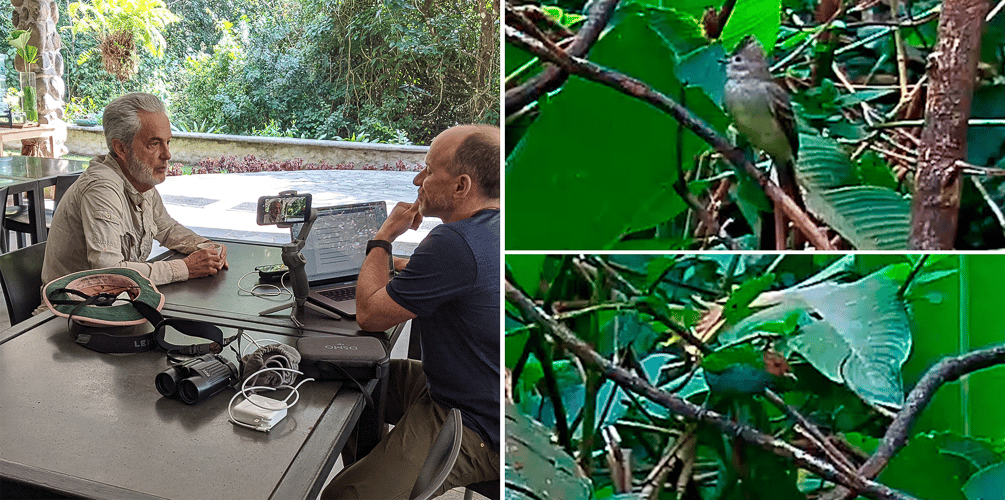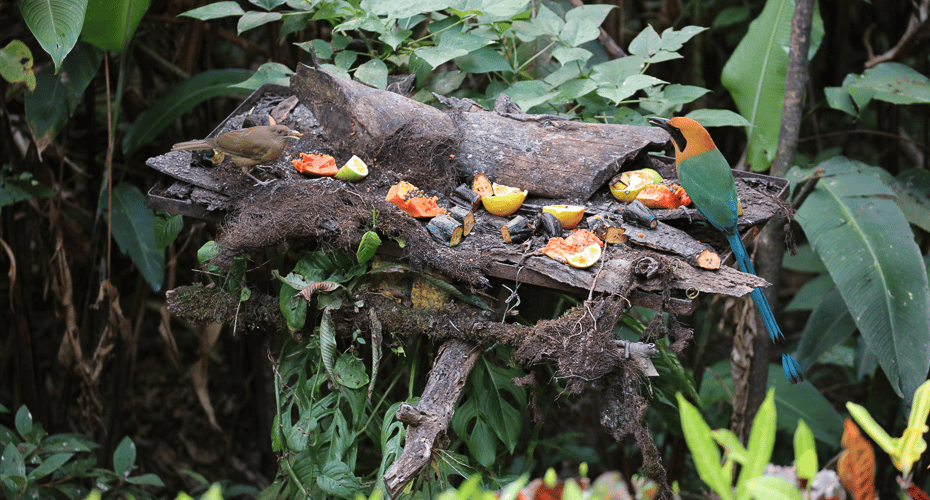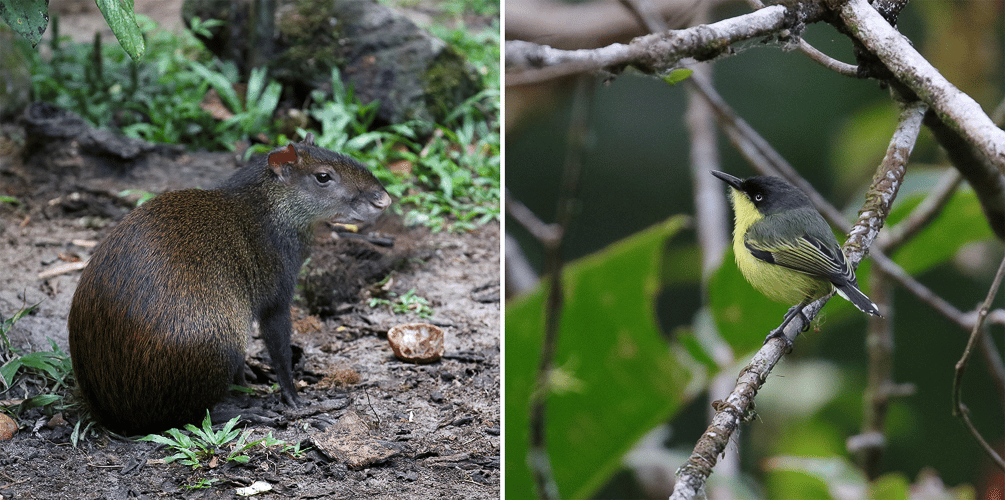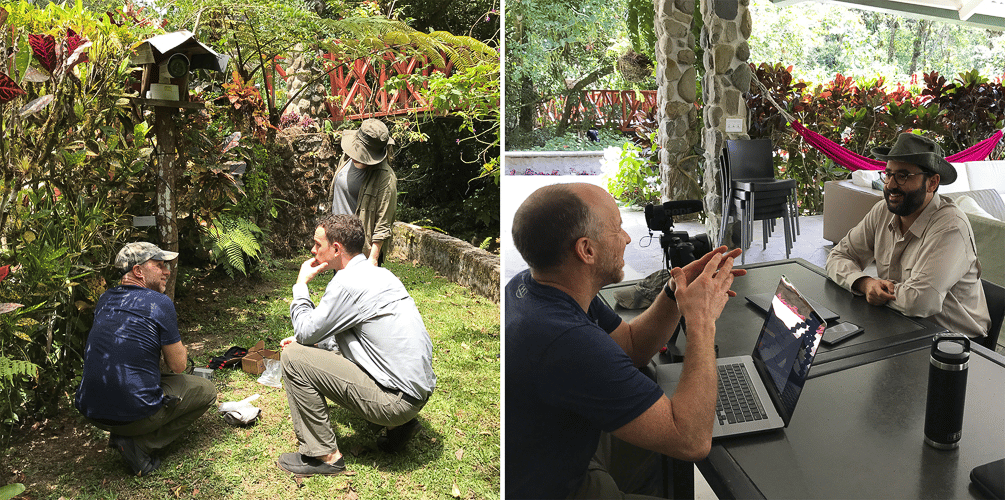Two weeks ago, Charles Eldermire and Renee Mach from the Cornell Lab of Ornithology visited the Canopy Lodge in order to work on the Panama Fruit Feeder Cam that live-streams footage of the birds at our fruit feeder. This was Renee’s first visit to Panama, and Charles’ first visit since December 2017 when the Cam was installed, as detailed in our last newsletter. The Cam began live-streaming in January 2018, and since then it has received 3.7 million views from more than 100 countries, helping to increase our knowledge and public awareness of tropical bird behavior and diversity. According to Renee, the Cam “provides us a peek at behaviors and interactions that we, scientists and citizen scientists alike, might otherwise miss,” and it continues to yield new information with the help of our viewers. For example, just in the last few weeks, three new species never before recorded on the Cam—Yellow-bellied Elaenia (Elaenia flavogaster), Thick-billed Seed-Finch (Sporophila funerea), and Bay-headed Tanager (Tangara gyrola)—were noticed by our viewers on the live-stream, bringing the total number of species recorded on the Cam to 58. In the words of Cornell Lab’s director John Fitzpatrick, asked about the partnership between Cornell Lab and the Canopy Family: “the Cornell Lab has deep admiration for their commitment to and role in amplifying the appreciation of Panamanian biodiversity, both to the people of Panama and to the whole world. I am extremely proud that we can play a small part in the latter, via our Bird Cam investments.”

Having been live-streaming for over two years, the camera was due for a check-up, especially given the cloud forest environment of the Canopy Lodge. In particular, our viewers had recently been noticing what sounded like static in the audio of our live-stream. So when Charles and Renee arrived last week, they brought with them a new and upgraded microphone to install in the camera. When they opened the camera to replace the microphone, they discovered that tiny ants had managed to find their way inside the camera casing and had been chewing the plastic wiring around some of the cables—what we thought was static was actually the sound of tiny mandibles chewing plastic inside the camera! Charles replaced the microphone just in case and then sprayed the camera with liquid tape to try to prevent further entry by the local wildlife.

While they were here, Charles and Renee also took time to interview our president and founder Raúl Arias de Para and executive vice president Daniel Arias Barakat about the Feeder Cam project and its significance to the Canopy Family. They are planning to include this and other footage as part of a short documentary video about the Canopy Lodge to be released sometime in the next few months.

Finally, Charles, Renee, Raúl, and Daniel also discussed potential ways of improving the Feeder Cam and of expanding the partnership between the Cornell Lab and the Canopy Family. For example, many viewers of the live-stream are interested to know and see what is happening around the feeder, outside the frame of the image: this can include the Central American Agoutis (Dasyprocta punctata) that feed on the ground beneath the feeder, the Common Tody-Flycatchers (Todirostrum cinereum) that nest in the tree above, groups of Gray-headed Chachalacas (Ortalis cinereiceps) squabbling with each other, and many other goings-on. So the team discussed the possibility of adding panning and zooming capabilities to the camera, such that someone at the Lodge would be able to move and zoom the camera in order to focus in on interesting happenings. As another example, Charles and Renee informed us that many viewers watch the Feeder Cam as a form of relaxation, or even leave it on overnight to listen to the nocturnal sounds of the cloud forest. Inspired by this idea, the team discussed the possibility of setting up a new live-streaming camera at the top of the Canopy Tower, where the wildlife and the tranquil views of the treetops, the Panama City skyline, and the ships on the Canal might interest our viewers. Stay tuned for further developments!
In the meantime, we hope you will continue to enjoy the birds on the Feeder Cam, whether you are looking to help the Cornell Lab add new species to the Cam list or just appreciating the sights and sounds of the cloud forest. And of course if you are interested in seeing more, then come to Panama and visit us at the Canopy Lodge!

